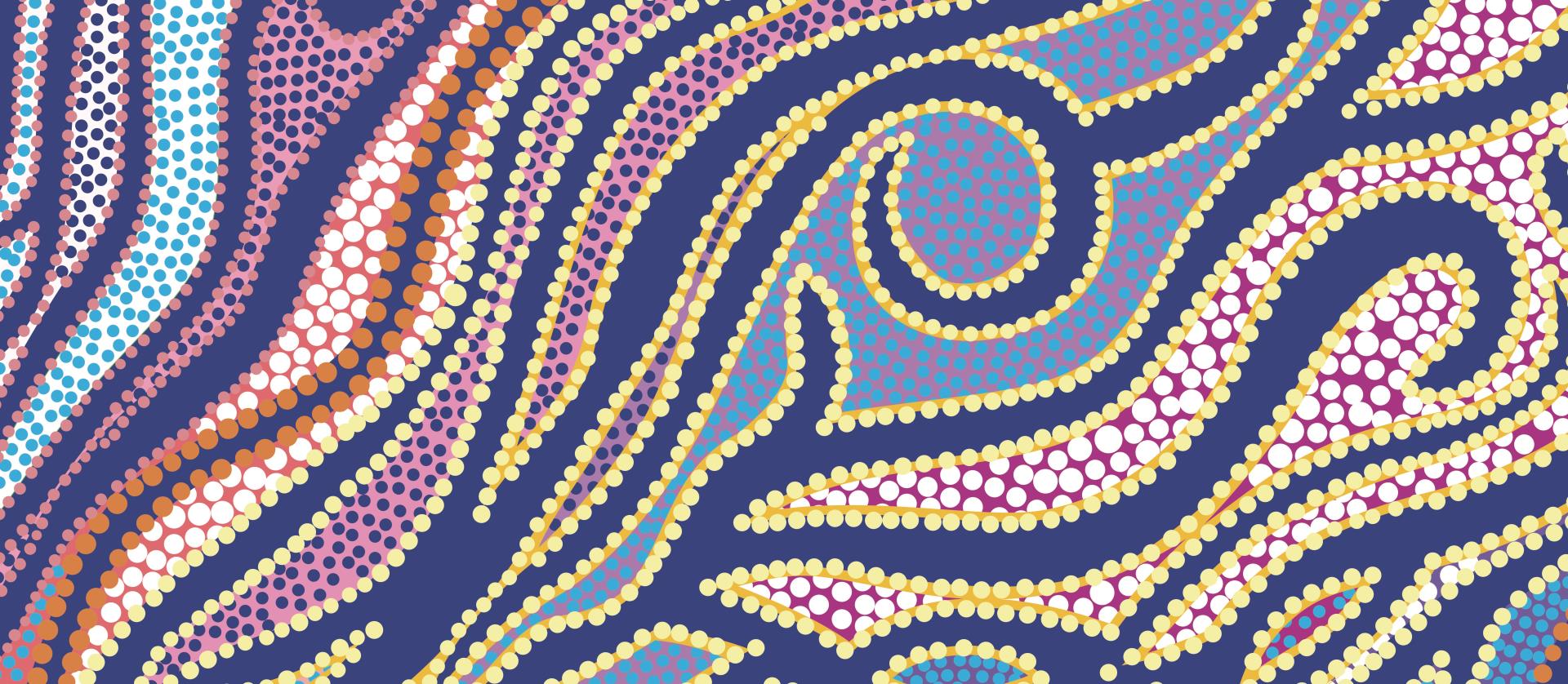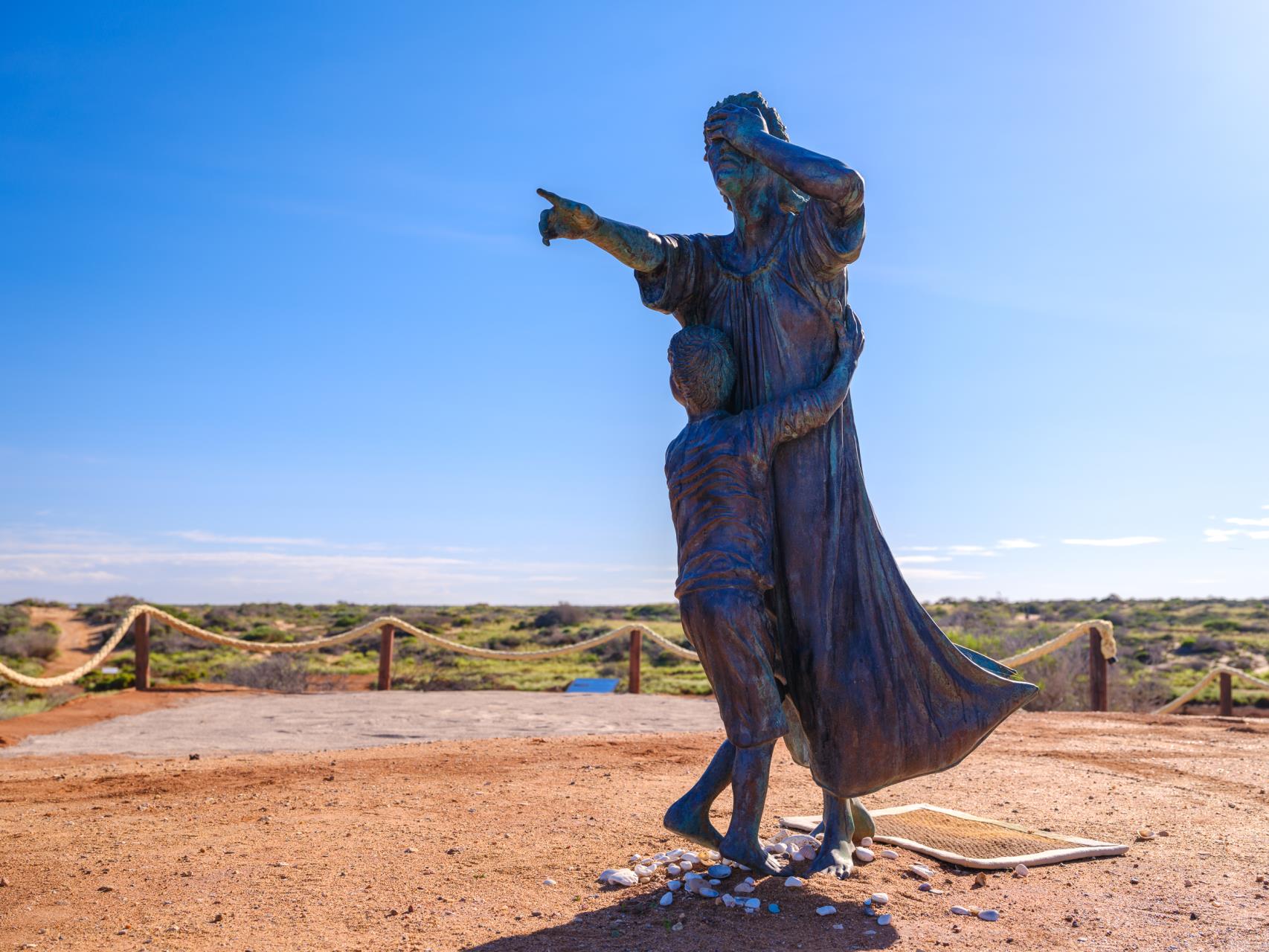Aboriginal Culture
Language groups
Aboriginal people have a rich history in the Gascoyne region that precedes European colonisation by tens of thousands of years. Gwoonwardu Mia Aboriginal Heritage and Cultural Centre celebrates the culture and country of the five Aboriginal language groups of the Gascoyne Region and provides the community with valuable source of information regarding Aboriginal cultural history.
After European colonisation of the Gascoyne in the 1870s Aboriginal people from many other areas of the State were brought to the region to work on pastoral stations and to be incarcerated on Bernier & Dorre Islands off the coast of Carnarvon. As a result the Gascoyne is now home to Aboriginal people from many language groups from around the State.
Contemporary understanding of Aboriginal language groups in the Gascoyne region recognises the following five main Traditional Owners groups:
- Baiyungu (buy-un-gu)
- Yinggarda (iin-gi-da)
- Thudgari (tu-gari)
- Malgana (mul-gun-na)
- Wajarri (wa-ja-ri)
These languages groups can be further classified based on their shared vocabulary and grammatical structure into the broader categories:
- Kanyara languages: comprising Baiyungu as well as Dhalanyji, Purduna and Binigura
- Kartu languages: comprising Yinggarda, Malgana, Wajarri as well as groups Badimaya and Nhanda
- Mantharta languages: comprising Tharrkari as well as Thiin, Jiwarli and Warriyangka
The Mandi language group, now extinct, was considered a distinct language group but is now considered a subgroup of Yinggarda, as the languages are almost identical.

Thanardi, Rachael Cooyou
Native title claims and determinations
There are numerous native title claims and determinations within the Gascoyne region. Most recently, the Wajarri Yamatji Part D and Wajarri Yamatji Part E claims were determined in July 2021. Prior to this, the Gnulli native title claim was determined in December 2019 giving recognition to the Yinggarda, Baiyungu and Thalanyji People over an area of 71,354 square kilometres. The relevant Prescribed Bodies Corporate (PBC) are the Nganhurra Thanardi Garrbu Aboriginal Corporation (covering the Baiyungu and Thalanyji Traditional Owners) and the Yinggarda Aboriginal Corporation.
In April 2019, the Thiin-Mah Warriyangka Tharrkari Jiwarli People were formally recognised by as native title holders of an approximately 6,804 square kilometres land area within the Shires of Ashburton, Carnarvon, and Upper Gascoyne. The relevant PBC is Woodgoomungooh Aboriginal Corporation.
The Malgana People were granted native title in December 2018 over approximately 28,800 square kilometres of land and waters around the World Heritage listed Shark Bay. The relevant PBC is Malgana Aboriginal Corporation.
In 2009, the Thudgari People were granted native title over an area of 11,280sq km in the eastern Gascoyne. Their interests are represented through the Kulyamba Aboriginal Corporation, the native title PBC.
Yamatji Marlpa Aboriginal Corporation is the native title representative body for the Traditional Owners of the Pilbara Midwest and Gascoyne Regions within WA.
Aboriginal communities
There are three Aboriginal communities in the Gascoyne Region, two remote communities located within the Shire of Upper Gascoyne and one town-based community in East Carnarvon.
Burringurrah is a medium sized community of approximately 120 people, situated within Wajarri country. The community is managed by the Burringurrah Community Aboriginal Corporation and is supported by a multi-stakeholder group (including Commonwealth, WA government and non-government organisations) that coordinates access to community services for residents of this community.
Woodgamia Community is a small community in the Gascoyne Junction township with a small number (10 – 15) of permanent residents. Population numbers swell seasonally. The Shire of Upper Gascoyne provide support to this community.
Mungallah Village is located in East Carnarvon. The village contains residential dwellings and recreation facilities. The community were originally located on the Gascoyne river near Carnarvon but were relocated in the 1980s to new housing and a purpose-built community at Greys Plains to overcome the regular seasonal flooding of the river. Current residents comprise Aboriginal people from many communities and language groups from the Gascoyne and beyond. While the community currently faces significant social challenges, there are important social and community initiatives being driven by members of this community in partnership with local non-government organisations and the Shire of Carnarvon.
Bernier and Dorre Islands Lock Hospital Tragedy
The Lock Hospitals off the coast of Carnarvon on Bernier and Dorre Islands were the site of brutal colonial trauma inflicted on the Aboriginal population from across the state where they were forcibly placed on remote islands.
Several hundred Aboriginal people from across Western Australia were forcibly removed from their family and country to the lock hospitals. Many family members who were separated during the lock hospital scheme never saw each other again. It is conservatively estimated that more than 200 people died on the islands. The prisoner patients were said to have the non-specific diagnosis of “venereal disease”, although there are many questions about the reliability of this diagnosis.
The Lock Hospital Tragedy Memorial 'Don't look at the Islands' was officially unveiled at the Carnarvon Heritage Precinct on 17 April 2019 by the Hon. Alannah MacTiernan, Minister for Regional Development, after the commemoration event in Carnarvon on 9 January 2019, which marked 100 years since the Lock Hospitals commenced operations of the coast of Carnarvon.
As visitors reach the end of the Lock Hospital Walk Trail at the Carnarvon Heritage Precinct, they are confronted with a life-like sculptural recognition of the pain that was one of the most poignant aspects of this terrible history epitomised in the tales that have been told, of how the children reacted and coped with the horror of being separated from their parents.
The bronze sculpture, 'Don't look at the Islands' endeavours to embody the core element of forcible separation expressed through the eyes of the children whose parents, family and larger tribe were physically torn apart, though children were also forcibly removed to the Islands.

Don't look at the Islands, Lock Hospital Tragedy memorial statue
Economic and community development initiatives
Aboriginal Economic development is a Strategic Priority of the Commission and the the Commission have established a Targeted Aboriginal Business Support program to progress Aboriginal economic development in the region.
The Commission, through successful Regional Economic Development (RED) grant applications, are also working with Tidal Moon on a beche de mer processing and sea ranching business development project on Mulgana Country (Shark Bay) and have helped fund ABC Foundation's Food for the Mob On Country Kitchen based in Carnarvon.
Other community initiatives
The Lock Hospital Working Group was established to bring recognition to the tragic history and trauma inflicted on the Aboriginal population from across the state, when Aboriginal people were forcibly incarcerated on the remote Bernier and Dorre islands off the coast of Carnarvon. The Path of Pain project centres on an installation piece utilising a series of chain link bench seats that together symbolise the ‘pilgrimage roadway’ that Aboriginal People were forced to traverse as they were transferred to the islands. As both artistic pieces and places of rest, they will allow for contemplation and sharing of history.
Gwoonwardu Mia, the Gascoyne Aboriginal Heritage and Cultural Centre for all five language groups of the region, was reopened in 2019. It is currently operated by WA Museums under a funding agreement with DPIRD.
Real Futures is a majority national scale Aboriginal owned controlled and managed company providing employment services. The Carnarvon Real Futures office plays an active role in promoting economic development opportunities for Aboriginal people in the region.
The Carnarvon community is in the process of developing a Justice Reinvestment Strategy, which is a grassroots initiative to help guide, support and create services for the town.
Maps
Native title claims and determination areas map
Gnulli native title determination extent map
Northern Gascoyne PBCs map
Malgana PBC map
Aboriginal communities map